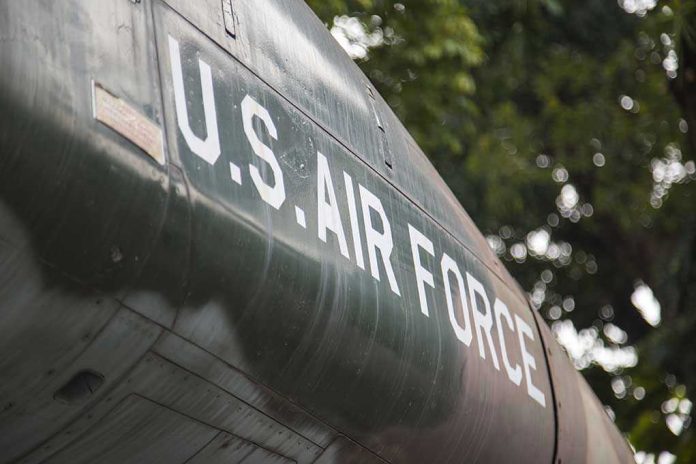
The U.S. Air Force, under the new Trump administration, has reportedly saved $10.4 billion, sparking curiosity about the implications of such a massive financial reclaim.
At a Glance
- The Air Force saved $10.4 billion through the Department of Government Efficiency (DOGE) initiative.
- Trump’s administration is redirecting these savings towards crucial modernization efforts.
- Over 500 contracts were reviewed, resulting in significant cancellations and job cuts.
- This initiative may impact civilian employees and defense contractors significantly.
Trump’s DOGE Initiative: Saving Billions
The Trump administration’s return to office in 2025 marked a new era of fiscal responsibility, particularly within the defense sector. President Trump, through his Department of Government Efficiency (DOGE) initiative, aimed to slash unnecessary spending across federal agencies. The Air Force, a primary focus, was tasked to cut $10 billion in wasteful spending. Under the leadership of Air Force Secretary Troy Meink, the initiative identified $10.4 billion in savings by scrutinizing contracts and business systems. This bold move not only echoes Trump’s commitment to efficient governance but also channels funds into the Air Force’s modernization efforts.
This financial saving comes at a critical time as the Air Force undergoes its largest modernization push in history. The initiative involves significant investments in cutting-edge technologies to counter global threats, particularly from China. However, this ambitious project faces budget constraints, making the DOGE initiative’s success crucial. By eliminating wasteful expenditures, resources have been freed up, ensuring that the Air Force remains a formidable global force. Yet, this victory isn’t without its challenges, as the cuts may disrupt ongoing projects and affect employee morale.
Impacts on Key Stakeholders
Primary stakeholders in this initiative include President Trump, who spearheads the DOGE initiative, Air Force Secretary Troy Meink, and Defense Secretary Pete Hegseth. Their roles are pivotal in ensuring that the savings are effectively redirected towards modernization efforts. The initiative threatens the livelihoods of civilian employees and contractors facing potential job losses due to contract cancellations. While Trump and his team are motivated by fiscal prudence, the affected workers have understandable concerns about their future employment prospects. This dynamic creates a complex balance between achieving efficiency and maintaining workforce morale.
Secretary Meink, tasked with implementing these directives, has expressed confidence in the necessity of these savings to maintain operational readiness. However, the Air Force’s civilian workforce and contractors are directly affected, with many facing job cuts due to the initiative’s sweeping changes. As the Air Force navigates these turbulent waters, it becomes imperative to strike a balance between cutting costs and preserving the expertise needed to execute modernization plans successfully.
Analyzing the Broader Implications
The $10.4 billion savings initiative has significant short-term and long-term implications. In the short term, the Air Force must deal with immediate reductions in contract spending and workforce size, potentially disrupting ongoing projects. Long-term, the reallocation of funds towards modernization may enhance operational efficiency. However, there’s a risk of capability gaps if the cuts are not managed judiciously. The economic impact on regions dependent on Air Force contracts and civilian employment cannot be ignored, with potential political debates over the balance between efficiency and readiness.
The initiative sends a strong signal to other federal agencies about the seriousness of the DOGE initiative and the administration’s readiness to implement deep cuts. However, it also poses broader effects on the defense contracting sector, with possible ripple effects across the industry. The administration must be cautious in ensuring that these cuts do not undermine the very capabilities they aim to enhance.
Expert Opinions and Future Outlook
Industry experts have mixed reactions to this initiative. While the $10.4 billion savings are commendable, the absence of detailed breakdowns raises questions about the sustainability of these cuts. Aggressive contract and workforce reductions might threaten readiness or delay crucial programs if not carefully implemented. Defense budget scholars emphasize the tension between efficiency drives and robust capabilities amid modernization needs and global competition.
Supporters of the initiative argue it is a necessary step to curb decades of unchecked spending, while critics caution against unintended consequences such as reduced morale and loss of expertise. The success of this initiative will depend largely on its execution and the administration’s ability to address these concerns while maintaining the Air Force’s operational excellence.
Sources:
Air & Space Forces Magazine (budget analysis)
Breaking Defense (context and expert analysis)







